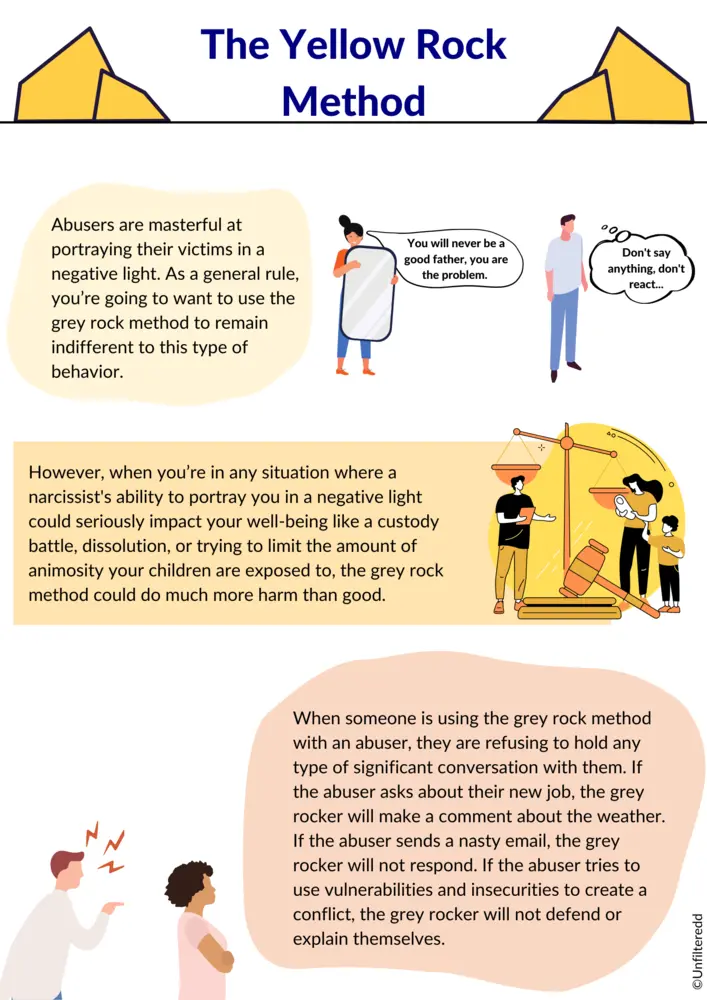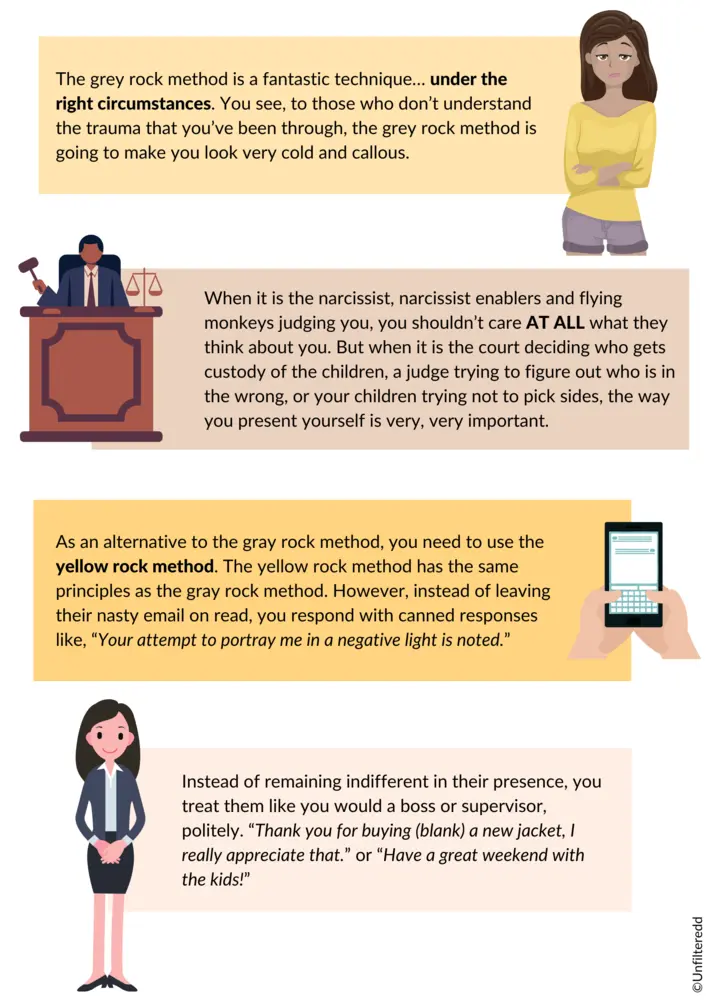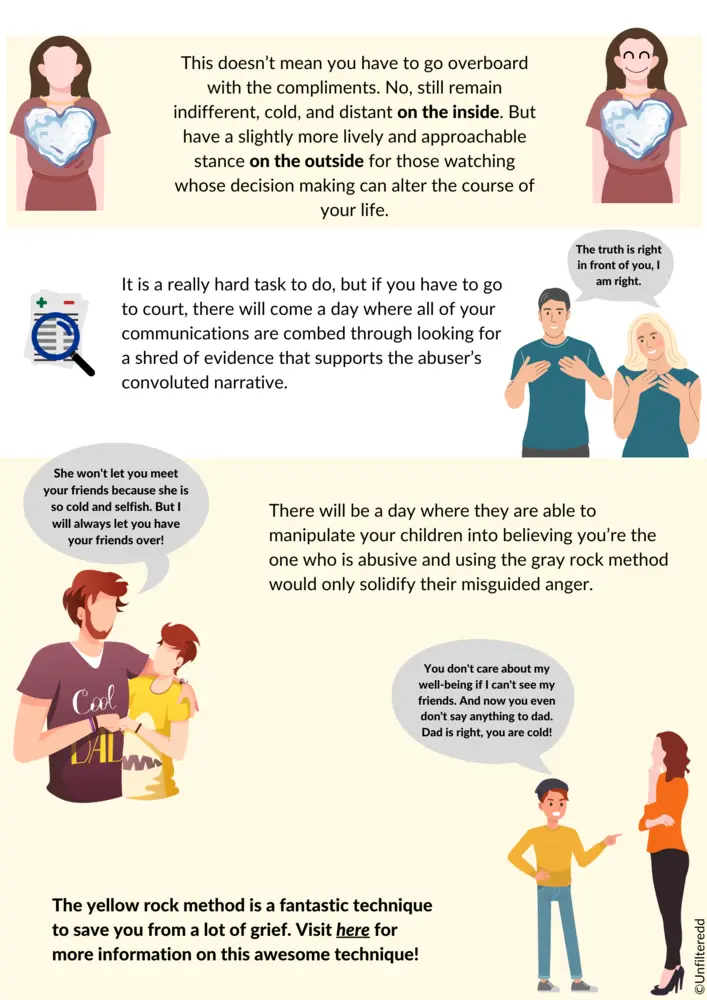Narcissists are really hard to effectively manage, even with very strong boundaries in place. The omnipresent threat of narcissistic abuse in society today is terrifying. If left unchecked, a narcissist has the capability to consume months, years, even decades of someone’s life. It’s for this reason that learning how to disarm a narcissist is one of the most valuable skills one could have when it comes to navigating interpersonal relationships.
To disarm a narcissist, victims of their abuse must detach their emotions from the narcissist’s behavior. Once the victim of narcissistic abuse lets go of the need for justice, fairness, closure, and explanations, they’ll be able to use a variety of clever techniques to disarm the narcissist once and for all.
The downfall of many victims of narcissistic abuse is holding onto the belief that good things happen to good people. There are certainly some aspects of life where this belief is true but it is important to remember that narcissists operate under a different set of rules. In other words, the phrase “kill them with kindness” doesn’t exist in narcissistic environments.
Why Do You Need to Detach Your Emotions From the Narcissist’s Behavior in Order to Disarm Them
There are so many really clever techniques victims of narcissistic abuse can use to disarm the narcissist in their lives but they require the victim to acknowledge the justice, fairness, closure, and explanations will never come from the narcissist, they must come from within.
We go through this much more thoroughly in our article Why Do Narcissists Devalue Others, but a really valuable piece of information about narcissism that victims of narcissistic abuse should have before attempting to disarm a narcissist is that narcissistic abuse isn’t as personal as one may think.
It’s important to understand the reasoning behind this because it will allow victims of narcissistic abuse to let go of the need for justice, fairness, closure, and explanations from the narcissist and instead find it within themselves.

There are many different reasons that narcissists abuse others but their self-centeredness, lack of empathy, sense of superiority, fear of intimacy, fear of abandonment and/or rejection, and superficiality makes them incapable of truly evaluating the essence of a person and making a judgment based on that, which is required for their abuse to be truly personal.
With that being said, the ruthlessness of a narcissist’s abuse definitely makes their attacks feel personal, there’s no doubt about that. However, when narcissists victimize other people, they’re usually indirectly attacking a part of themselves even though their wrath is directed at others.
What does this mean?
It’s widely believed that narcissism originate from an unhealthy/abusive upbringing. There’s a lot more really important information that we go through thoroughly in our article How Are Narcissists Made but this upbringing has caused them to develop an emotional immaturity and a deeply rooted hatred for their true identity which happens to be vulnerable and insecure.
Unfortunately, their emotional immaturity prohibits them from regulating all of the negative emotions that originate from self-hate so they get really good at compartmentalization, a psychological defense mechanism in which thoughts and feelings that seem to conflict are kept separated or isolated from each other in the mind.
In plain english, narcissists get really good at suppressing their negative thoughts, emotions, and feelings as a compartment of their mind. To keep all of this negativity suppressed, a narcissist will create a falsified identity that portrays them as admirable, successful, desirable and so on.
Unfortunately, narcissists build this falsified identity out of their own perception of what society values most but because of their emotional immaturity they can’t look past society’s superficial exterior. This causes them to build this falsified identity out of very superficial, materialistic, and trivial aspects of life.
When a narcissist crosses paths with someone or something that either directly or indirectly contradicts their identity or tampers with the compartment that they’ve locked their negative emotions in, they’re reminded of their existences and in a desperate last ditch attempt to keep them suppressed, they lash out at the person, animal, or thing that triggered the whole conundrum.
Meaning that while narcissistic abuse does feel really personal, what is much more probable is that the victim represents a value or truth that triggers a narcissists compartmentalize negative emotions and by attacking the victim, they’re attacking a part of themselves that they do not like.
Our article How Do Narcissists Choose Their Scapegoat goes into this much more thoroughly.
So, it’s not an excuse for their behavior and this information shouldn’t be interpreted as victim blaming or a reason to justify staying in a narcissistic environment, but it does offer some really good information victims of narcissistic abuse can use to let go of the need for justice, fairness, closure, and/or explanations to successfully disarm a narcissist.
Four Techniques You Can Use to Disarm a Narcissist
When learning about the different techniques you can use to protect yourself in a narcissistic relationship, it is really important to remember to take your specific situation into account before attempting to use any of them.
For example, the best way to disarm a narcissist would be to go no contact with them. However, not everyone is in the position to do so. Someone who doesn’t have children with the narcissist and financially stable is in a much better position to go no contact with a narcissist than someone who does have children and/or has been financially abused.
There are so many different reasons that one couldn’t go no contact with a narcissist. It’s not the end of the world, it just means that they have to be a bit more clever in their escape.
Suggested Reading: Living With a Narcissist When Leaving Isn’t an Option
The Gray Rock Method
The gray rock method is when someone refuses to have significant conversations with the narcissist in their lives.
This means that they won’t share good news with them, they won’t fall for the narcissist’s bait, they won’t defend themselves against projection, they won’t validate or admire the narcissist, and they’ll essentially become indifferent to narcissistic abuse.

The gray rock method is a really valuable technique to use because it limits the amount of narcissistic supply the victim gives the narcissist. We covered this more thoroughly in our article What Are Narcissists’ Weaknesses but narcissists are shockingly dependent on narcissistic supply which is the validation, admiration, and reassurance they extract from others.
In the previous section we mentioned that narcissists are very good at compartmentalization. They suppress all of their negative emotions deep within their psyche behind a falsified identity that they build off of their immature perception of the world.
The sun-like gravitational pull that their suppressed negative emotions just eat away at their falsified identity so they use narcissistic supply to patch it up. It’s for this reason that they need a never ending flow of it. So, when victims of narcissistic abuse refuse to engage with the narcissist in their lives and maintain a superficial front, it blocks their source of narcissistic supply.
The purpose of this technique is to become so boring, like a gray rock, that the narcissist decides to leave the victim alone and go find another source of narcissistic supply.

The Yellow Rock Method
To those who don’t understand narcissistic abuse, the gray rock method makes the victim look like a jerk. Usually, you shouldn’t care what others think because the gray rock method is about you healing and finding happiness.
However, there are some situations where you should be very aware of how others perceive you because of how good narcissists are at portraying their victim in a negative light.
For example, during a custody battle the gray rock method would make it seem that you aren’t willing to co-parent and the narcissist could portray you in a negative light to the courts which would have horrifying consequences for you and your kids.
The yellow rock method is a watered down version of the gray rock method but if used correctly, just as effective.



Admiration
A controversial but proven technique one could use to significantly reduce their chances of being abused by the narcissist in their lives is by being a sufficient source of narcissistic supply.
We STRONGLY encourage that this technique ONLY be used by those in narcissistic work environments or by those trying to manage a narcissistic family member who they don’t live with. For example, a victim of narcissistic abuse who has to visit narcissistic family members on the holidays.
To successfully use this technique victims of narcissistic abuse must convince the narcissist that their admiration is too valuable for the narcissist to tarnish by being abusive.

The reason that this technique should only be used in narcissistic work environments and temporary narcissistic family settings is because it is gut wrenching to use.
The thought of having to be nice to someone who is so abusive can be disgusting. However, for those who aren’t able to just quit their jobs or someone who only has to do it for a few hours, it can be a really really good technique to avoid the narcissist’s wrath.
Holding Them Accountable at Every Turn
A really good technique a group of people could use to disarm a narcissist is to hold them accountable for their behavior at every single turn. This approach is similar to the admiration technique in the way that it cuts off the narcissist’s supply and that it shouldn’t be used by everyone.
We STRONGLY suggest that this technique ONLY be used in narcissistic work environments and narcissistic families. The reason being that this technique is going to make the narcissist very insecure, vulnerable, and subsequently, angry.
To use this technique everyone in the narcissistic environment must have a ZERO TOLERANCE approach. This means keeping detailed documentation of the abusive behavior and responding firmly to the abuse.
If this technique is used in environments where not everyone is onboard with the attempt to snuff out narcissistic abuse, it must be done in a way that is fair and doesn’t come off as bullying. The reason being that narcissists are masterful at victimizing themselves and if they find something they can present to sympathizers and enablers, they will.
What Should You Take Away From This Article?
There are many different techniques you can use to disarm a narcissist. For example, did you know that you can turn a narcissist’s most powerful form of manipulation, gaslighting, and use it against them?
If not, be sure to check out our article Is It Possible to Gaslight a Narcissist (Advice From 432 Survivors) to learn how!
With that being said, none of the techniques you learn about disarming a narcissist are going to work without a comprehensive grasp of why they work. Be sure to use all of the time that you can spare to learn about narcissistic abuse because it will help your progress down your healing journey in a healthy, happy, and secure manner.
About the Author

Hey, I’m Elijah.
I experienced narcissistic abuse for three years.
I create these articles to help you understand and validate your experiences.
Thank you for reading, and remember, healing is possible even when it feels impossible.
